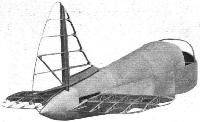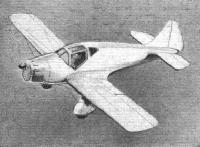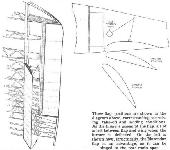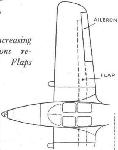
Flight, February 1936
A BRITISH NEWCOMER
Side-by-side Seating in Light Monoplane to be Produced by Sports Car Makers
TO the designs of Mr. D. M. K. Marendaz, known to motoring enthusiasts as the designer and manufacturer of Marendaz Special cars, a low-wing two-seater cabin monoplane is being built at Maidenhead. Mr. Marendaz was a war-time pilot and has had experience as a racing driver. Construction of the machine is well in hand.
Complete particulars are not yet available, but the company believes that, due to the machine's simplicity, comprehensive equipment and side-by-side dual control, it will appeal not only to the private owner of moderate means, but also to schools. It is being designed to conform with the Air Ministry's aerobatic requirements.
The fuselage is of semi-monocoque construction, and is wide enough, it is claimed, to provide accommodation equal to that in an Austin Seven car. What engine will be specified as standard has not yet been revealed. Flaps, landing light, differentially operated brakes (patents pending) and undercarriage springing by torsion shaft (patents pending) are features. The price, completely equipped, will be ?650.
MARENDAZ MONOPLANE
Span 28ft.
Length 21ft. 5in.
Weight empty 821 lb.
Disposable load 550lb.
Luggage allowance 50lb.
Fuel capacity 20 gall.
Wing loading 10.6 lb./sq.ft.
Power loading 15 lb./h.p.
Maximum speed 138 m.p.h.
Cruising speed 120 m.p.h.
Landing speed 45 m.p.h.
Описание:
- Flight, February 1936
A BRITISH NEWCOMER - Flight, April 1936
MODERN LIGHT AIRCRAFT REVIEW - Flight, November 1939
Britain's Civil Aircraft
Фотографии
-
Flight 1938-05 / Flight
Регистрационный номер: G-AFGG [2] Making its public bow: The Marendaz Mark III, not quite finished but looking eager to go somewhere quickly. It seats four, and the motor is a Gipsy Six.
-
Air Pictorial 1955-08 / Photos by request
Регистрационный номер: G-AFGG [2] MARENDAZ MARK 3. Built by International Aircraft and Engineering Ltd., at Barton, Beds, the Marendaz was designed in two versions, the Mks. 3 and 4. The Mark 3 shown here was a 3 four-seat with a Gipsy Six and the Mk. 4 a two-seat with a Gipsy Major. Special type slots and flaps were fitted, as well as a retractable undercarriage. The Marendaz Mk. 3 had a span of 31 ft. and length 26 ft. The Marendaz Mk. 4 would have had the same dimensions but the undercarriage was fixed. Neither the Mk. 3 or 4 ever flew, it is believed. This photograph was taken at the R.Ae.S. Garden Party at Heathrow on 8th May, 1938.
-
Flight 1936-02 / Flight
The semi-monocoque fuselage and tail unit of the Marendaz monoplane.
-
Flight 1936-04 / Flight
A two-seater cabin machine now in the process of being built - the Marendaz, which is likely to be fitted with a Pobjoy engine.
-
Flight 1937-05 / Flight
Three flap positions are shown in the diagram, corresponding to cruising, take-off and landing conditions. As the hinge is ahead of the flap, a slot is left between flap and wing when the former is deflected. On the left is shown how, structurally, the Marendaz flap is an advantage, as it can be hinged to the rear main spar.
-
Flight 1937-05 / Flight
A plan view of the International Aircraft monoplane, showing location of the Marendaz flap and aileron.
-
Flight 1936-02 / Flight
MARENDAZ MONOPLANE
- Фотографии






